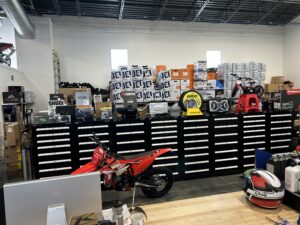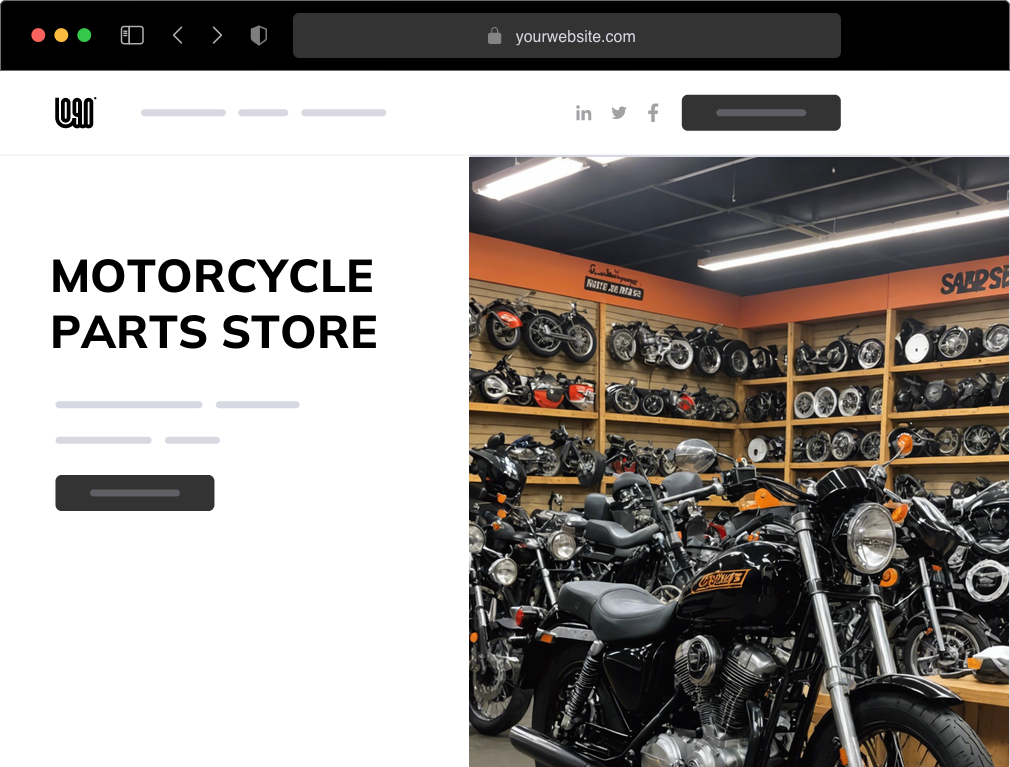Recognizing the Vital Parts of a Bike: A Comprehensive Guide for Lovers
For motorbike fanatics seeking to elevate their riding experience and ensure their bikes run smoothly, understanding the essential parts of a motorcycle is paramount. Each aspect, from the engine's detailed workings to the vital duty of the braking devices, not only affects efficiency yet additionally security and convenience. This overview will certainly go through the essential parts that every biker ought to know with, allowing notified choices in both upkeep and prospective upgrades. As we begin this expedition, one must ask: exactly how does each component interact to develop the seamless ride every enthusiast looks for?
Engine Components

The camshaft plays a crucial duty in controlling the timing of the engine's valves, making certain the accurate opening and closing essential for effective gas and air intake, along with exhaust expulsion. This timing is crucial to maintaining optimal engine efficiency and effectiveness. In addition, the carburetor or fuel injection system, depending upon the bike model, is liable for blending air with fuel in the correct ratio for burning.
The cooling system, either air or liquid-based, functions to preserve the engine's temperature within functional limitations, stopping getting too hot and making certain long life - motorbike shop. Each component, thoroughly designed and integrated, contributes to the smooth procedure of the engine, specifying the motorcycle's power output and general performance
Transmission System
Important to the bike's functionality, the transmission system ensures effective power transfer from the engine to the wheels. This system comprises several critical components, including the clutch, transmission, and last drive, each playing an essential role in equating the engine's power into activity. The clutch, normally operated by a hand bar, offers to disengage the engine and involve from the transmission, allowing for smooth gear changes and regulated velocity.
The transmission, often described as the transmission appropriate, has a collection of gears that bikers can by hand shift via to readjust the bike's rate and torque output. These gears are prepared in a sequence that makes it possible for the motorcycle to speed up smoothly and keep ideal engine performance throughout numerous rates. Many bikes make use of a sequential gearbox, requiring the cyclist to move gears in a predetermined order.
Braking Devices
While recognizing the transmission system is key to utilizing a bike's power, similarly important is the ability to manage and quit that power successfully, which is where braking devices enter into play. Brakes are crucial for security and performance, offering the motorcyclist with the essential control to navigate various surfaces and problems. Commonly, motorbikes include 2 kinds of braking systems: disc brakes and drum brakes.
Disc brakes are extra widespread in contemporary bikes due to their click for more info remarkable performance. This system provides far better warmth dissipation, regular efficiency, and boosted quiting power, particularly in damp conditions.
On the other hand, drum brakes, though less typical, are still found in some motorcycles. They work by pressing brake footwear versus the inner surface area of a drum affixed to the wheel. While typically less reliable in warmth dissipation and stopping power, drum brakes are motorcycle parts less complex and much more cost-effective.
Understanding these stopping systems' nuances permits riders to maintain their motorcycles appropriately and appreciate the design that makes sure reliable and risk-free stopping.
Suspension and Guiding
Suspension and guiding systems are crucial components that significantly affect a motorcycle's handling and adventure comfort. The shock absorber, including forks at the front and shock absorbers at the rear, absorbs roadway irregularities, boosting stability and control. Front forks, inverted or generally telescopic, compress and rebound to mitigate effects, while rear shock absorbers preserve tire call with the road, crucial for traction and security.
Guiding, centered around the handlebars, links the cyclist to the bike's directional control. The steering head bearings make sure smooth procedure, allowing exact maneuverability. Proper positioning and maintenance of these bearings are crucial for foreseeable steering response and reducing rider exhaustion.
The suspension's adjustability is an additional essential aspect; preload, damping, and rebound settings permit modification to fit numerous riding styles and conditions. This flexibility is vital for optimizing efficiency, whether navigating metropolitan roads or dealing with tough trails. Developments like electronic shock absorber use real-time changes, improving ride top quality across diverse surfaces.

Electrical Equipments
After guaranteeing a regulated and smooth trip via reliable suspension and guiding systems, interest transforms to the electric systems, a crucial element of modern-day bikes. These systems play a critical function not only in starting the engine but likewise in powering various components Click Here that boost the functionality and security of the motorcycle.
At the heart of a motorcycle's electrical system is the battery, which shops electrical power essential for beginning the engine and powering supporting systems - motorcycle shop. The generator or generator, coupled with the rectifier-regulator, ensures the battery remains billed while the motorcycle is in procedure, transforming power into electric power and maintaining voltage degrees
The ignition system, another important part, is responsible for igniting the air-fuel blend in the engine's cylinders. Modern motorbikes usually utilize a digital ignition system, providing better efficiency and reliability contrasted to typical systems.
Illumination systems, including fronts lights, tail lights, and indications, are also vital, making sure visibility and security for the motorcyclist. Added electronic parts such as sensing units, control units, and presents contribute to innovative attributes like fuel injection management, anti-lock braking systems (ABS), and electronic control panels, even more improving the riding experience.
Conclusion
A detailed comprehension of a motorbike's crucial parts, including the engine, transmission system, stopping mechanisms, suspension, steering, and electrical systems, is indispensable for lovers aiming to enhance security, convenience, and efficiency. Proficiency of these aspects permits for notified decisions pertaining to maintenance and upgrades, inevitably improving the riding experience. By incorporating this expertise, bikers can ensure their motorbikes operate at peak performance and dependability, thus taking full advantage of both satisfaction and longevity of their cars.
For motorbike enthusiasts looking to elevate their riding experience and ensure their bikes run smoothly, understanding the essential components of a bike is critical.Indispensable to the bike's capability, the transmission system ensures efficient power transfer from the engine to the wheels.While understanding the transmission system is essential to harnessing a motorcycle's power, similarly essential is the capability to control and quit that power efficiently, which is where stopping mechanisms come right into play. Usually, motorcycles feature 2 kinds of braking systems: disc brakes and drum brakes.
A thorough understanding of a motorbike's vital elements, including the engine, transmission system, stopping devices, suspension, guiding, and electrical systems, is vital for enthusiasts intending to optimize convenience, safety, and performance.